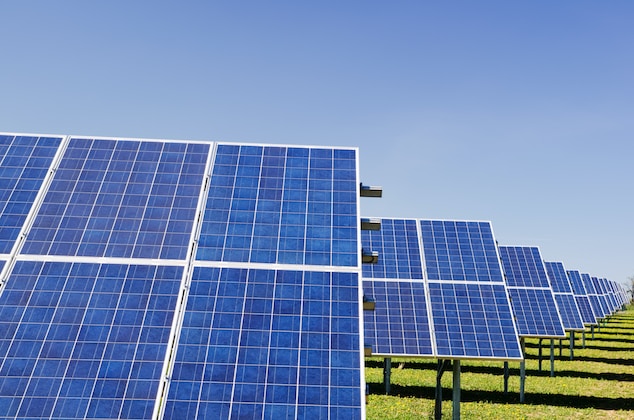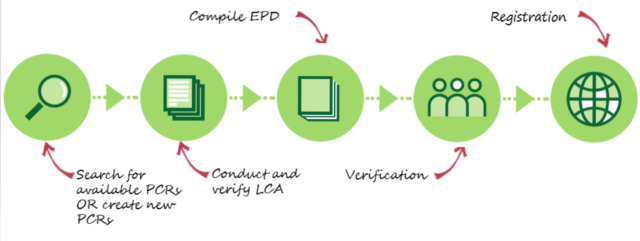Environmental Product Declarations, or EPD for short, is a major category under the well-known green building certification LEED. The EPD system gives producers the opportunity to take the initiative necessary to develop more environmentally friendly goods and contribute to the reduction of their overall carbon footprint. This is a movement that will also have a positive economic value as the declared products will be preferred by sustainable architects, developers and clients.

The EPD or the Environmental Product Declarations for products
An EPD is a document that describes the environmental performance of a product using language that is simple and straightforward for consumers to grasp. It is essentially a type of life cycle assessment that displays the impact on the environment. The intent of declaring a product this way is to show that it was produced with materials and methods that can improve its impact socially, environmentally and economically.
Most people might be more familiar with a similar system for electrical appliances – the E Star rating system. It communicates how much energy an appliance can conserve throughout its usage.
A successful application of EPD proves the product is in accordance with a thorough life cycle assessment and international standards like ISO 14025 and EN 15804. Each environmental product declaration comes with a validity of five years.
Understand the Components of Environmental Product Declarations
The development of a sustainable product begins with an understanding of the EPD’s constituent parts.
Environmental Product Declarations can include the following information on the product:
- Product identification data
- Material composition
- Energy consumption throughout the use
- Emissions to water, soil and air (including indoor air quality)
- Chemical substances and potentially hazardous compounds
- Life Cycle Assessment results
Environmental Product Declarations are similar to life cycle assessments (LCAs). Some might even say an EPD is a shorter version of LCA but with additional information.
The declaration should also address the life-cycle consequences connected with the manufacture and use of the product and outline methods for minimizing their environmental footprint. It is essential to have a thorough understanding of each of these components in order to generate an EPD that is accurate, trustworthy, and easily comprehensible to clients.

Why are Environmental Product Declarations so important?
Environmental Product Declarations are gaining more and more significance as businesses strive to show their dedication to sustainable practices. Environmentally friendly products may use sustainable materials and manufacturing methods to reduce its negative environmental impact. This includes waste production, carbon emission and use of non-renewable materials. By comparing EPDs, it becomes more practical to compare the impact of each product and its materials and choose the best and the most sustainable option.
If you are interested to find out more about green materials, here are 10 best energy-efficient building materials for sustainable homes.
With the objective and accurate data provided by the environmental product declarations, customers are able to make educated judgments regarding the environmental effect of a product. This openness not only enables consumers to choose items that are in line with the environmental values they hold, but it also motivates manufacturers to reduce the impact they can indirectly bring upon the surrounding environment. It is essential for every company that wants to develop more environmentally friendly goods to have a solid understanding of the significance of this accreditation.
Types of Environmental Product Declarations
Single-company single-product
This first type of EPD provides information on the environmental impact of a single product by one manufacturer along its lifecycle. Under LEED v4, such type is stated as Product-specific Type III EPD. The corresponding standard for this type of environmental product declaration is the ISO 14025. Products that are either continuously produced or produced only for a specific project only can both apply for this Environmental Product declaration.
Read more: How Powerful are Building LEED Certifications?
Multiple products
If one manufacturer has similar products, they can be included in a single EPD for multiple products. The products can be manufactured by the same company or be similar products from one or several factories. In such cases, only one representative product and its corresponding results are declared.
Products yet to be launched
Forthcoming products that are yet to be launched can also obtain an Environmental Product Declaration. However, there is a requirement – the EPD owner must have already registered an EPD for a similar product. If the data composition of the LCA (Life Cycle Assessment) is similar, these products can be considered sibling products. If there are changes in the LCA model between the two products, they may be considered non-sibling products. The forthcoming product’s environmental assessment must be updated after a year of actual production.
Declaring your environmental products

Gather Data on Your Product and its Life Cycle
It is crucial to collect the appropriate data for your EPDs if you want to ensure their legitimacy and correctness. In order to get started, you will need to carry out an environmental life cycle assessment (LCA) of the whole life cycle of the product, beginning with the extraction of the raw materials and ending with its disposal.
Make sure that all of the potential sources of influence throughout the product’s life cycle, such as emissions, water usage, and chemicals used in manufacture, are taken into consideration. It is also necessary to look at possible variations between different substances, processes, or nations. This will allow you to determine which areas need the greatest improvement or which countries have the most amazing environmental performance. When you have collected all of the pertinent data, the next step is to verify its accuracy by adhering to trustworthy standards and establishing third-party certification processes in collaboration with reliable vendors.

Determine the Appropriate Protocols for Your EPD
When you have finished gathering all of your data, the next step in producing a useful environmental product declaration is to make sure that you follow the appropriate protocols and processes. Protocols such as EcoChain, ACV-PCR (Product Carbon Footprint), and LEED BD+C give vital advice on how to identify the proper system boundaries, determine sample sites, and portray environmental impacts in a way that is consistent across a variety of different products. It is possible to utilize a mix of various methods for certain product categories, which may assist assure the authenticity of the findings you get.
In order to give best practice solutions for carrying out the assessment, it is important to engage industry professionals who are already acquainted with the EPD process. This is required in order to gather the necessary information and fulfill the prerequisites of the process.
Create a System for the Collection and Application of Data in an EPD
It is crucial to have a methodical procedure in place for the collection and application of data for an EPD. This comprises the creation of systems for collecting data from various stakeholders, determining the dependability of the data, effectively processing it, and reporting pertinent findings in a uniform manner.
To guarantee that the information in your EPD is accurate and credible, you must carefully complete each step of this procedure. In addition, you should think about examining solutions such as the ISO EN 14025 eco-labelling standard to notify consumers about sustainable product design features and practices. This may be comforting for them when the time comes to make decisions for their purchases.
Learn more about LEED and its rating and certification system and how you can become a LEED Green Associate, equipped with skills and knowledge to handle sustainable design projects.



